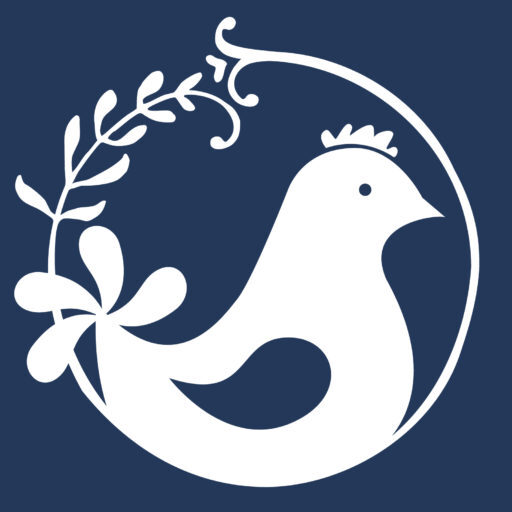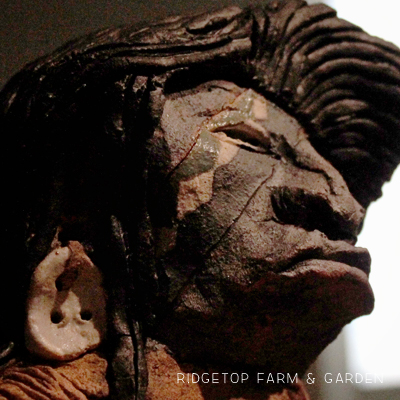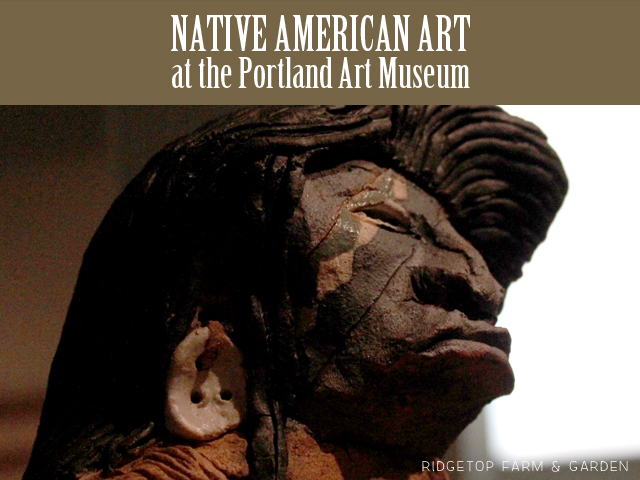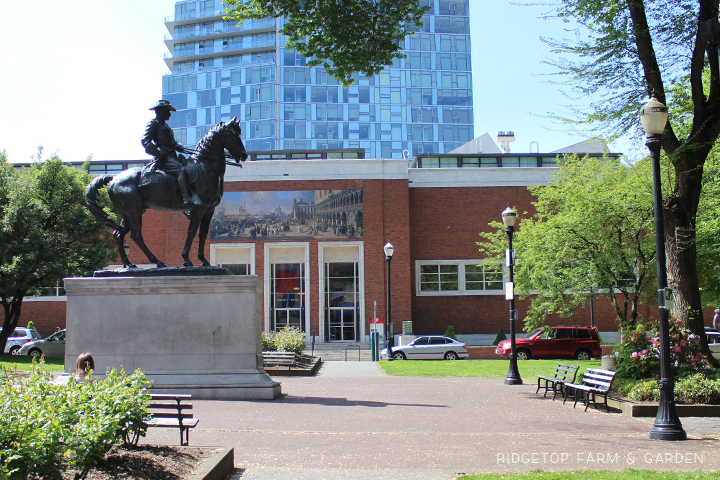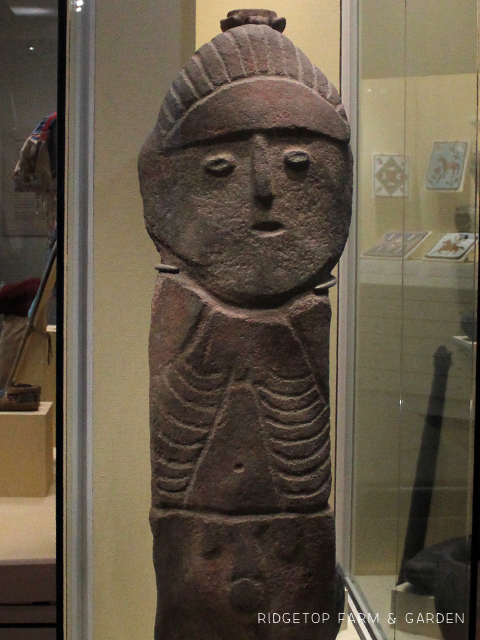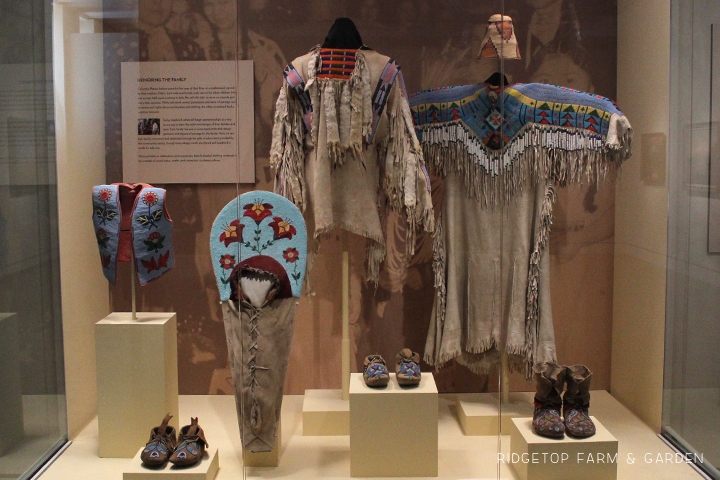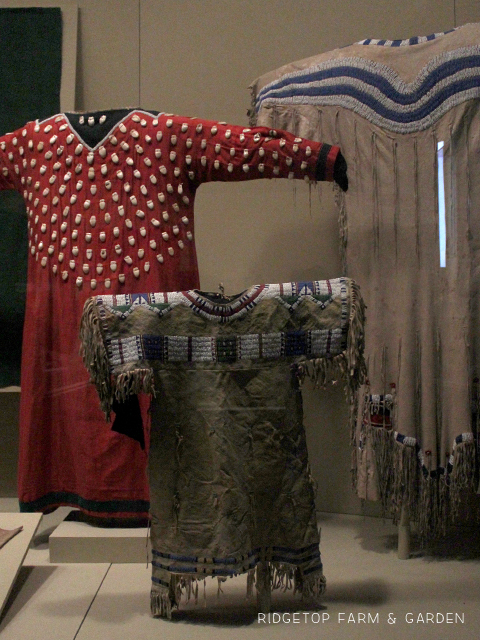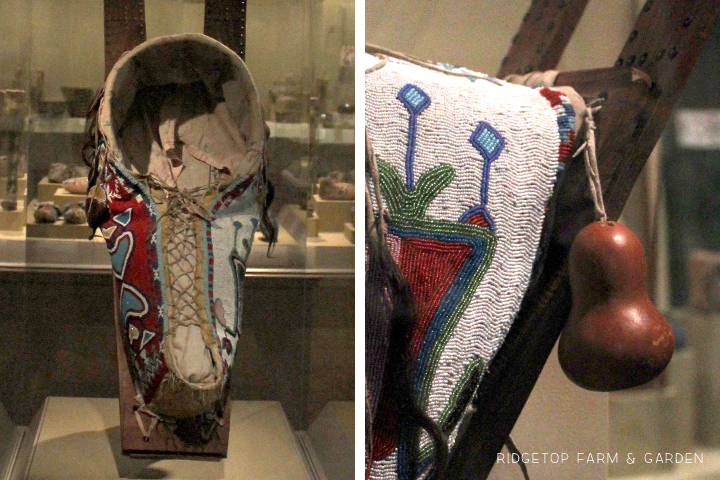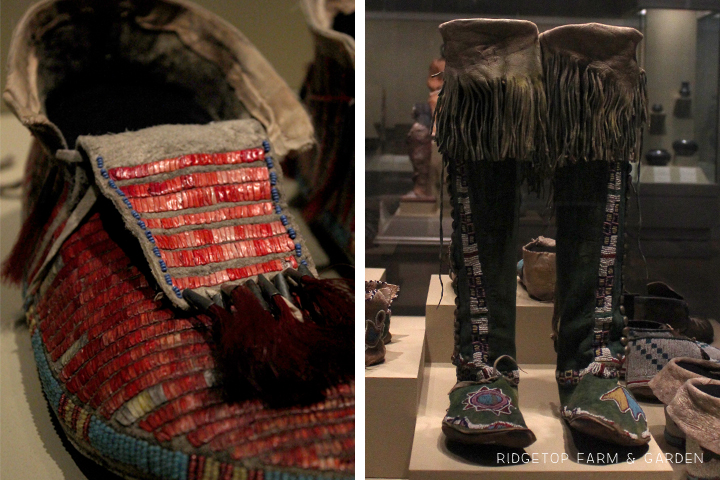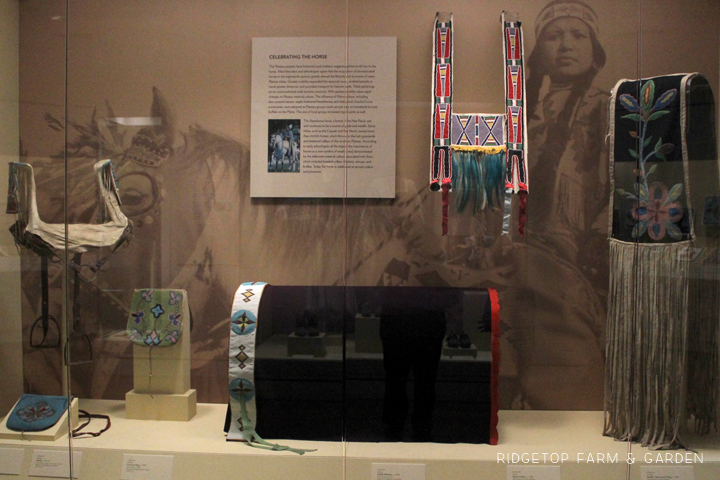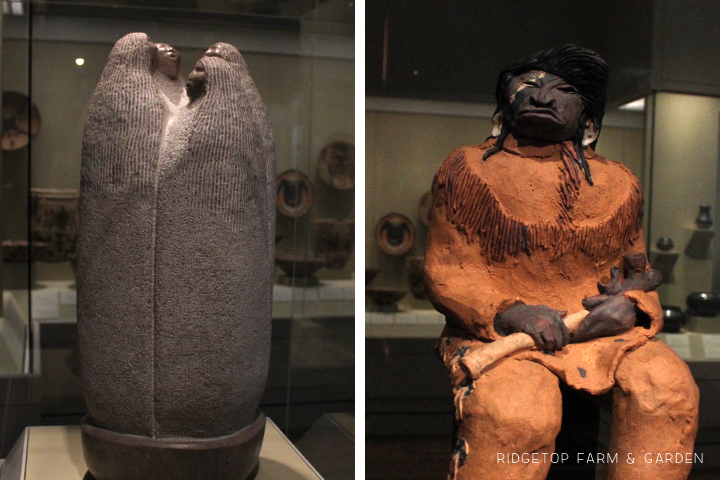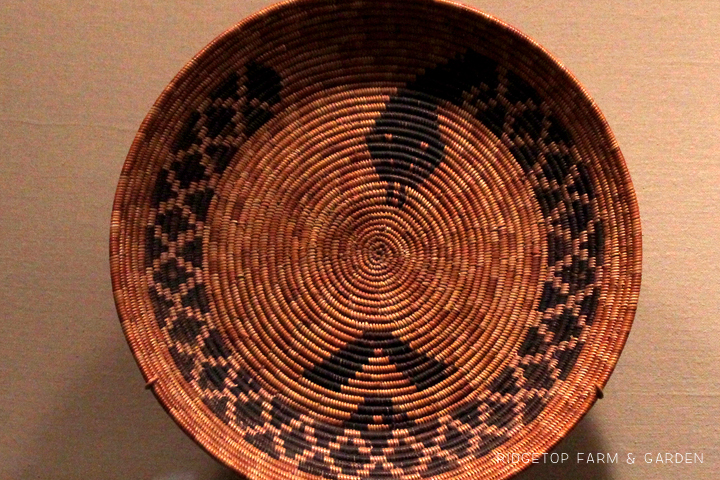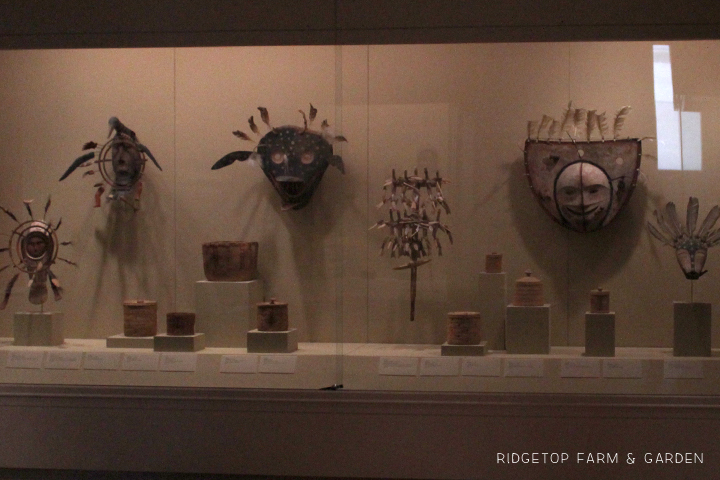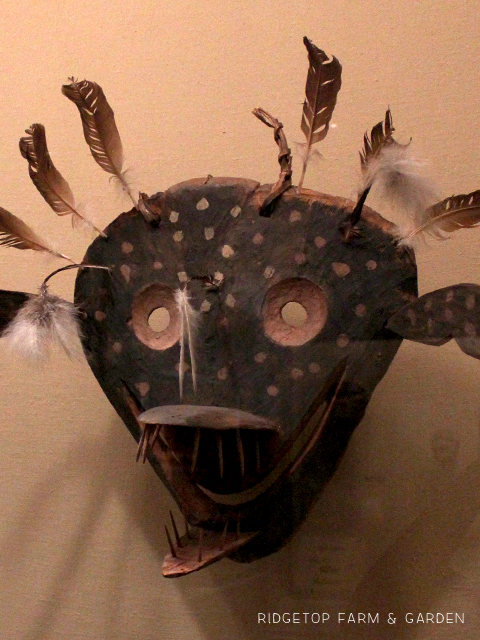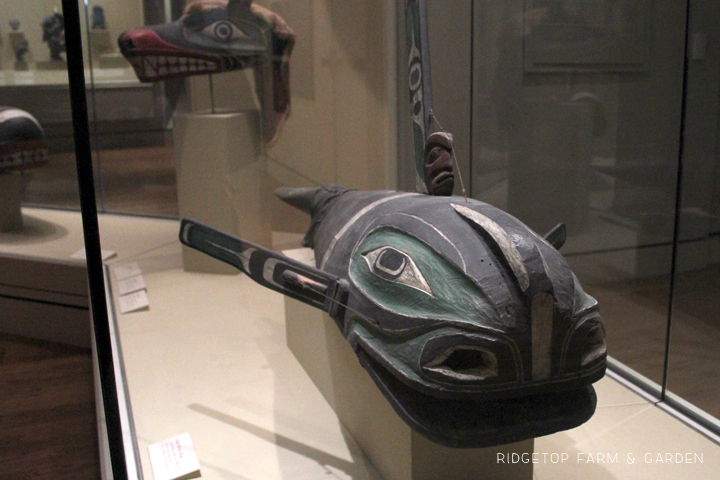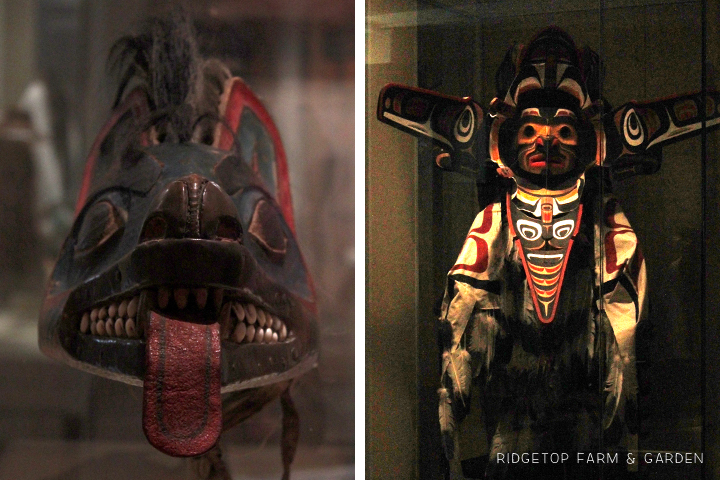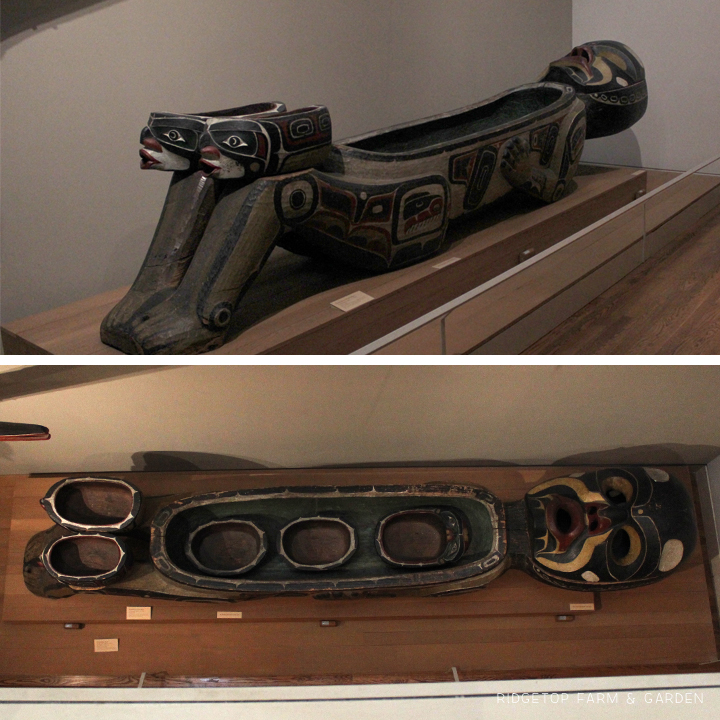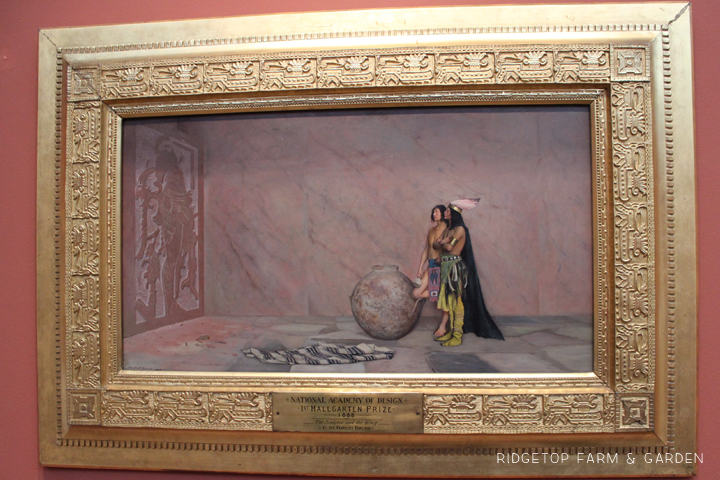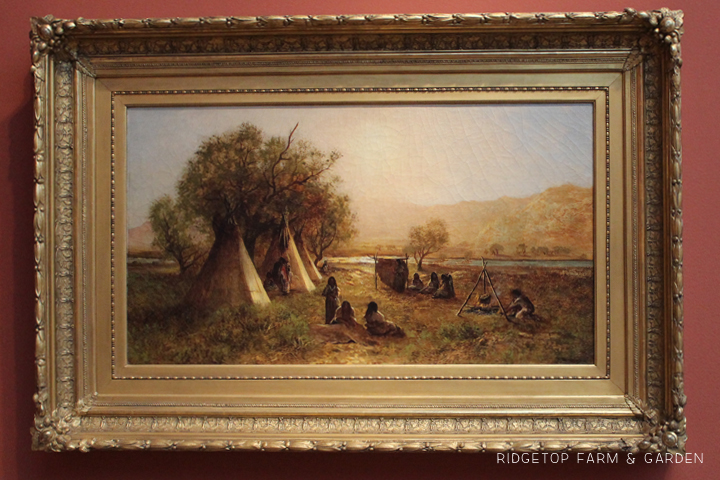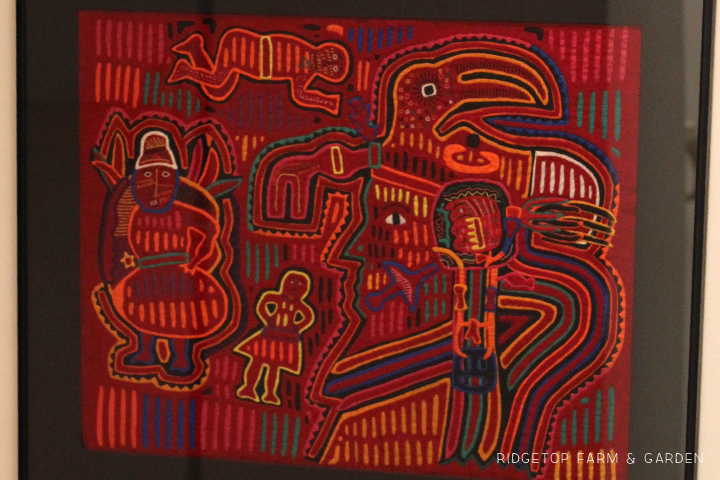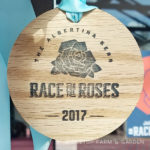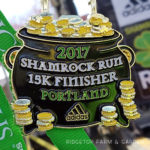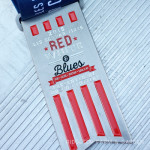To go along with our unit on Native Americans, I took the kids to the Portland Art Museum to see their Native American collection. We saw a variety of art. Some work was modern & used as decoration, some work was once used in celebrations, & some work was used in everyday life. I was surprised & impressed with all the different styles.
We went to the Art Museum on a day there was a public tour of the Native American art. The woman in the photo below was our docent & was great at asking the kids questions. The tour was about an hour. The first 30-45 minutes the kids were really engaged, then I think the talking got to be too much & they started getting antsy. I’m happy knowing they did learn at least a little bit because occasionally they will mention something the woman told us.
After Boarding School: In Mourning
Kaila Farrell-Smith. 2011. Oil paint & pastel on canvas.
This painting tells a story I never knew. My kids were saddened by it, as well. I never knew that well into the 20th century Native American children were taken from their homes to go to school. They were taught the ways of the Euro-Americans. They were forced to cut their hair & not speak their native language.
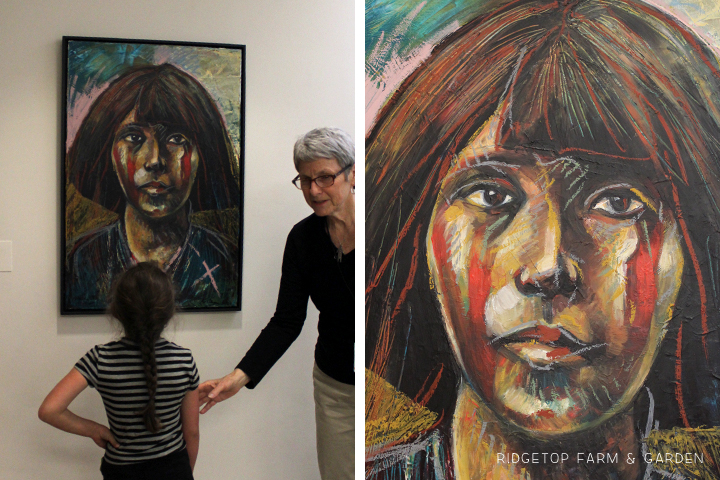
Anthropomorphic Figure
unknown Columbia River artist. Before 1750. Basalt.
Honoring the Family
Family items made by Native Americans in the Columbia Plateau
Elk Tooth Dress
unknown Crow artist. ca 1890. Wool cloth, elk teeth, bone, and glass beads.
Girl’s Dress
unknown Cheyenne artist. ca 1890. Leather, glass beads, and paint.
Dress
unknown Blackfeet artist. ca 1890. Leather, glass beads, and wool cloth.
Cradle
unknown Kiowa artist. ca 1890. Wood, metal, leather, cotton cloth, glass beads, gourd, and hair.
A dried gourd on the cradle was baby’s rattle.
Woman’s Boots
unknown Kiowa artist. ca 1890. Leather, rawhide, paint, glass beads, metal tacks.
Moccasins
unknown Plains artist. ca 1890/1900. Leather, rawhide, cotton cloth binding, porcupine quills, glass beads, metal cones, and dyed horsehair.
Celebrating the Horse
Work of the Plateau Indians
Singing Maidens
Allan Houser. 1979. Tennessee marble.
Duck Pipe
Glenn LaFontaine. ca 1975. Clay and acrylic paint.
Basket
unknown Cahuilla artist. ca 1920. Sumac and juncus.
Because of the cold weather in Alaska, these Native Americans had fewer colors & materials available for their work. To be honest, these items were not my favorite, but I did appreciate them.
Mask
unknown Yup’ik artist. ca 1900. Wood, feathers, paint, and sinew
Killer Whale Mask
unknown Kwakwaka’wakw artist. ca 1900. Wood, paint, cloth, and string.
Wolf Forehead Mask
Tlingit. ca 1880. Wood, hair, copper, opercula shells, cloth, paint.
Raven to Sun Transformation Mask
Kwakwaka’wakw Tribe.
Dzunuk’wa Feast Dish
unknown Kwakwaka’wakw artist. ca 1900. Cedar and paint
When we first saw this, we were in awe. It’s huge. We didn’t know what it was. We thought maybe some kind of canoe or maybe a casket. Turns out it is to serve food. The Native Americans would use it to serve meals at large celebrations.
In this area of the museum we learned about the Pacific NW Native American art style, including the ovoid. It is definitely a shape & style I recognized, I just didn’t know it had a name or was so significant. An ovoid is a rounded rectangular shape. It is used to create things such as eyes, bodies, wings, fins, & can even be used just to fill up space. The ovoid shape is used many times in this feasting dish.
The Sculptor and the King
George de Forest Brush. 1888. Oil on wood panel.
Cheyenne Encampment
Ralph Blakelock. ca 1873. Oil on canvas.
Figurative Mola
unknown San Blas artist. ca 1940. Cotton.
Magpie, Guy, Wolf & Flat Screen
Joe Feddersen. 2012. Fused glass.
I am always surprised when modern or contemporary art grabs my attention & I like it, a lot. That’s not usually the type of art I tend to like. But this I really enjoyed. And, so did my kids. The artist is of Native American heritage & is a member of the The Confederated Tribes of The Colville Reservation. He combines his heritage with modern items, such as a tv, in his artwork. He is a basket maker & these fused glass pieces are a new way to create that weaving pattern. Now the kids & I want to take a fused glass class.
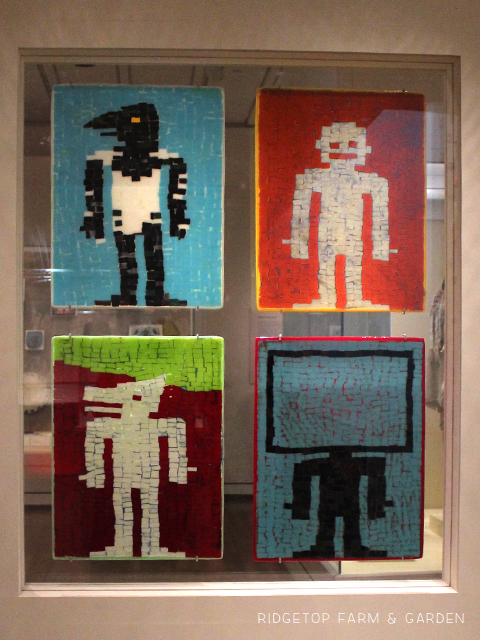
I am so thankful for all the great museums & places to visit within driving distance from our home.
